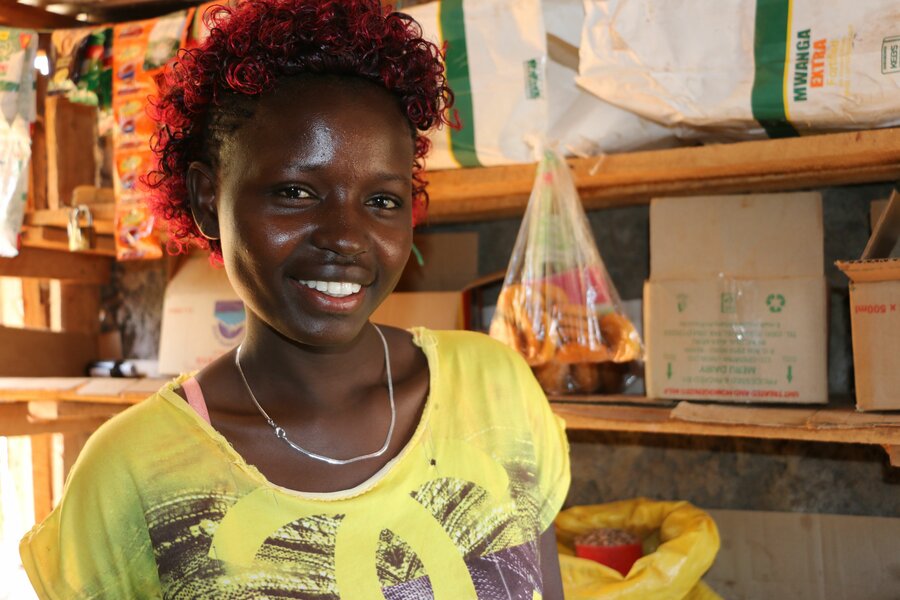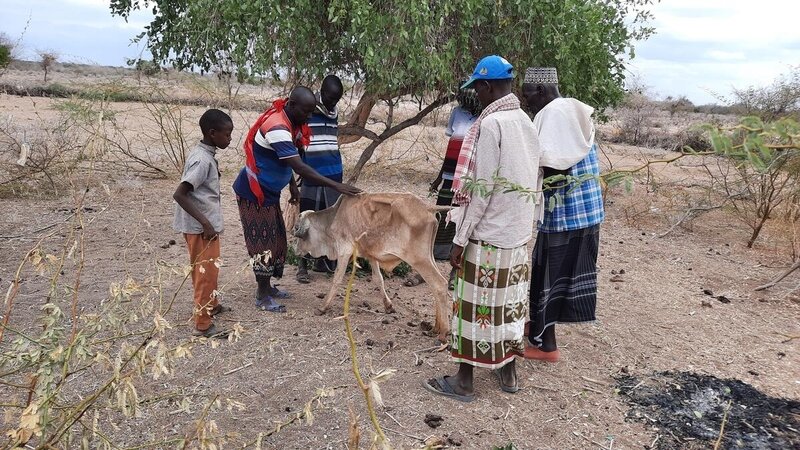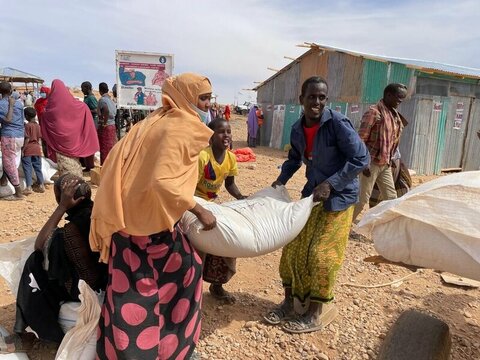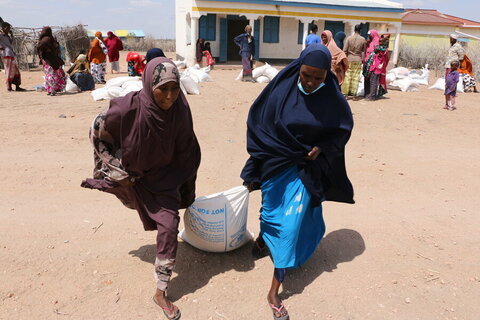Kenya: Cash grants power enterprise in spite of drought

Emaciated cattle meander between thorny acacia scrubs on my first day in Isiolo County in northern Kenya – it is desperately hot, and the parched earth makes for stark surroundings.
The animals are conserving energy on their steady search for water and fodder. Boreholes and shallow wells are close to depletion.
The years-long drought in Kenya is making life progressively challenging for people here. Sanitation is increasingly a problem. The country is part of a ‘ring of fire’ – stretching from Afghanistan, through to the Sahel and Latin America – where WFP says extreme weather, conflict, COVID-19 and rising costs are pushing people to the brink.
But while there’s an emergency devastating lives and livelihoods, exacerbating resource-based conflicts and escalating tensions, there are glimmers of hope. In spite of all the hardship, those who can are willing to invest what little they have to make their way out of the crisis.
When Emmanuella and George got married seven years ago, they settled on a plot of land nestled between two villages outside of Isiolo town.
The couple earned enough to get by between George’s boda boda (motorcycle taxi) service and the opportunities that Emmanuella picked up, such as chopping up fallen trees.

They used one corner of their plot to erect a small shop selling sweets, snacks, and phone credit to passing villagers. By the time their two sons were born, the drought had set in, employment opportunities were dwindling, and there was less money going around.
The World Food Programme (WFP) offered one-off drought payments to families in Isiolo, giving them the means to decide how and what they needed to manage.
Cash is a more empowering alternative to giving people food – it gives people choice – especially in Kenya, a country with high rates of digital-financial literacy and inclusion rates.
Emmanuella recalls receiving a text telling her she was entitled to collect a scratch card etched with a code to unlock around US$90 (10,000 Kenyan shillings). She snapped up the offer, collected her card, scratched off the silvery coating and withdrew her cash from a nearby mobile money stall.
Millions face hunger as drought grips Ethiopia, Kenya and Somalia, warns World Food Programme

On the journey home, the couple discussed options. Oscillating between ideas, assessing which would yield the most significant return, they decided: 6,000 Shillings to buy chicks and 4,000 Shillings to stock the shop fully.
Within days, Emmanuella had done just that, establishing a poultry enterprise.
“Now the profit that we get from the shop, we use to buy food for the chicks until they’re grown up. Now they’re there, they are laying eggs,” she says.
Keen to show the variety of produce in her shop, Emmanuella points out the rice, wheat flour, sugar, biscuits, sweets, soap, potatoes, beans, oil, eggs, tomatoes, and greens.
Then, suddenly, she stops.
There is an alien sound: the tip-tap of rain on the tin roof. Still, in spite of the clouds, no downpour ensues.
Emmanuella explains how her profits are paying off. The couple have more opportunities to invest in new products.
“I mostly use the benefits of the shop to pay my children’s school fees. The other things are normal household expenses,” says Emmanuella. “And also, I no longer rely on my husband, asking him money for buying food… before, I was asking him every day for money for food, sometimes leading us to quarrel.”
Around ten kilometres away, there’s a fertile field belonging to Amina. Her lush patch of land is the result of her 10,000-Shilling scratch card investment, which she’s spent on agricultural equipment. She weaves between tomato vines, each groaning under the weight of their fruit.
Years ago, Amina borrowed money, on advice, from her local village savings-and-loan association, and began growing maize, beans, tomatoes, onions, peppers, kale, and spinach. The absence of rainfall, however, meant several unsuccessful seasons. But with that one-off payment, Amina was able to find a way to get water from a distant water source to her crops.
In Kenya I saw how the Horn of Africa drought is pushing people into hunger

“I buy fertilizers or petrol for the water pump and now irrigate twice a week,” she says. “The price for fetching water to the crop field is too high. And there is no way of fetching water without petrol. Now, looking at these tomatoes, I see money.”
Amina has a business growth plan which involves investing in better quality tomato seeds and eventually buying a vehicle to drive produce to local markets. She’s pursuing those plans while also feeding back her experiences into the village savings-and-loan association that gave her the first grant. She's became a mentor to 50 women's groups because she sees entrepreneurs in everyone.
“If I did not reach out and talk with others, I would not have gotten to this point,” she says. “If I did not make my mind to stand up, as a woman, and plead for myself, I would not have got to this point. I would have been oppressed by culture, and I would have given up.”
The Horn of Africa drought is well entrenched. And its various effects are taking root throughout the region. Community-led efforts are underway to reduce the impacts of such climate shocks, but small pay-outs from WFP can also offer investment and growth opportunities for families like Emmanuella and Amina’s.
WFP's payments to drought-affected families in Kenya was possible thanks to generous support from USAID's Bureau of Humanitarian Assistance (BHA) and the United Nations Central Emergency response Fund (UN CERF).
